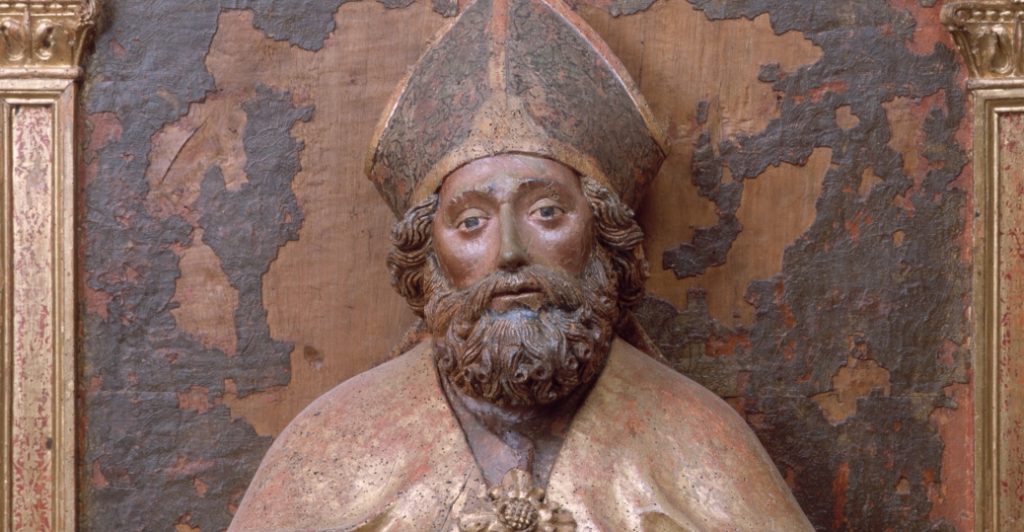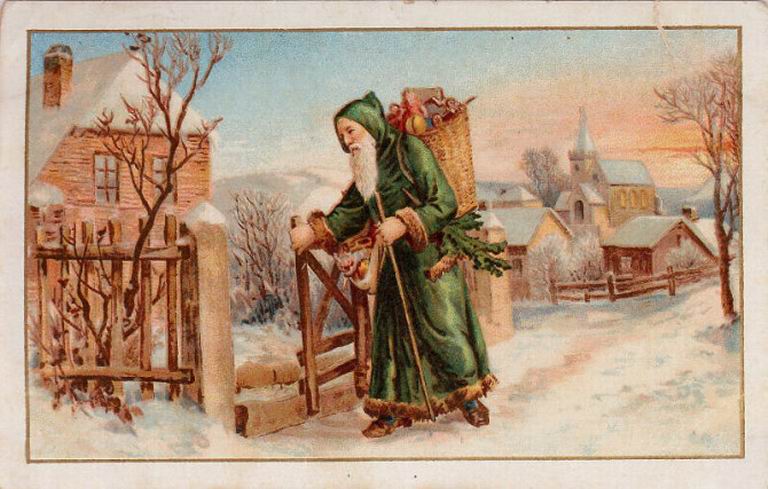
PHOTO: huffingtonpost.com
There’s three main names that get thrown around a lot during the Christmas Season. You’ve got Santa Claus – the name you hear in all the Christmas songs who goes around on a sleigh pulled by reindeer delivering toys to well-behaved children on Christmas Day, and you’ve got Saint Nicholas, the guy who’s generally associated with the tradition of Christmas stockings, and you’ve got the other name that gets dropped every once in a while: Father Christmas. What’s the difference? How were these different figures created? Are they all one in the same?
Father Christmas
Arguably the oldest of the three figures, Father Christmas is less of a mythological figure and more of a personification of Christmas itself. Father Christmas actually has his roots in ancient pagan winter ceremonies, as a figure who signified the coming of spring. He was dressed in holly and a long, green, hooded cloak.
As Britain changed hands, the winter deity changed, too. When Britain fell to the Saxons in the fifth century, This winter deity took on the characteristics of the Saxon King Frost, or King Winter. King Frost would dress up and enter someone’s home, and would sit down and be given something to eat. In return for the food, King Frost would give mortals a milder winter.
When the Normans invaded later, in the 11th century, they brought their own tradition of ‘Jultid’, a holiday that lasted the 20th through the 31st of December. According to the mythology, the Norse God, Odin, would take on the character of ‘Jul’, (or, more familiarly: ‘Yule’), a fat, elderly, jolly man with a white beard who would ride on his eight-legged horse, Slepnir, and deliver gifts to good people and punishments to the bad during ‘Jultid’. Over time, the ancient pagan deity of winter, King Frost and Jul merged together into one person: ‘Yule’.
Eventually, we find our first written reference to Christmas as a person in a carol written during the 15th century. It said “Welcome, my lord Christmas”. From then on, Yule became not a meshed version of King Frost and the Norse Jul, but a personification of the spirit of the Christian holiday, Christmas. Some resemblance still remained, though. In 1638, Father Christmas was illustrated by Thomas Nabbes, as an old, jolly man in a big, fluffy coat and hat and a long white beard.
“Lord Christmas” finally became “Father Christmas”, his final form, in the late 1600s. Believe it or not, Christmas itself was outlawed during this time. See, the Puritans had taken over government, and to them, the idea of celebrating a figure who had obvious pagan, Norse roots was abominable. So, they outlawed Christmas entirely for fifteen years. However, some plays were made to protest this. One in particular showed the personification of Christmas as a happy, benevolent figure, saying “In comes I, old Father Christmas, be I welcome or be I not? I hope old Father Christmas, will never be forgot.”
From then on, the jolly, white-bearded fusion of mythologies was called “Father Christmas”. Eventually the ban on celebrating Christmas was lifted, and the name of the lovable figure who presided over Christmas stuck.
Saint ‘Nick’ and Santa Claus

PHOTO: history.com
Unlike the other two figures in this list, ‘Good old Saint Nick’, or Saint Nicholas, was a real person who lived in the area of what is now present-day Turkey. He was born right around AD 280, when the Roman Empire still existed, Plutarch, Suetonius, and Tacitus were writing their histories, and the Mayan Empire was just beginning in the Americas.
Saint ‘Nick’, of course, is where we get our tradition of hanging stockings and stuffing them with small gifts, but how on earth did that tradition get started?
Well, the story goes that St. Nicholas was bishop of the small town of Myra. Now, in Myra, there was one family who was in trouble: a father and his three daughters. The father didn’t have enough money to pay his three daughters’ dowries, which meant they couldn’t get married, so he planned instead to sell them into slavery.
To save the girls from a life of servitude, St. Nicholas secretly went to their home and put a bag of money inside the door. He repeated this two more times, until there was enough money that the man could pay all his daughters’ dowries, and they were saved.
Over time, the story of St. Nicholas’ kindness spread to the rest of the world, and he became associated with gift-giving and kindness. He was a very popular saint in Europe until the Protestant Reformation in the 16th century, but even after the Protestants began to stop all worship of saints in Europe, Saint Nicholas remained a favorite in Holland.
The Dutch celebrated St. Nicholas’ Day on December 6th. For them, it was tradition for children to put their shoes by the door. In the morning, they would find gifts that St. Nicholas had left for them.
Eventually, Dutch immigrants brought their version of Saint Nicholas, called ‘Sinterklaas’, to the United States with them in the 1700s. After several transformations, his name evolved into ‘Santa Claus’, and he had meshed with Father Christmas from England: a jolly, fat man who slid down the chimney to leave presents for good children, wearing a red suit with white fur trim – the loveable figure we see in shopping malls today.


